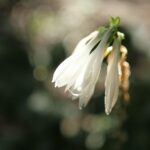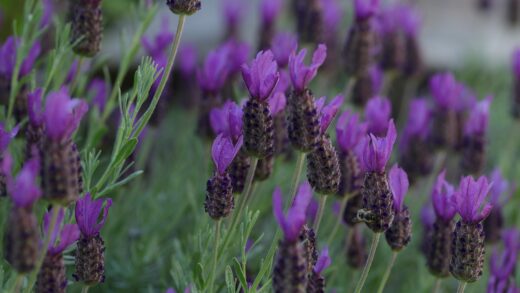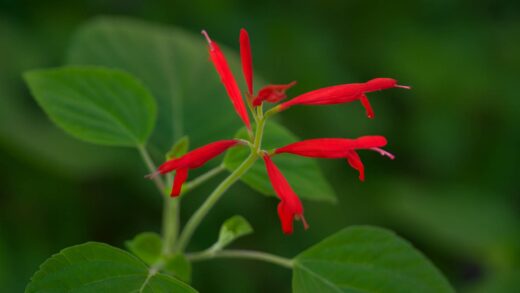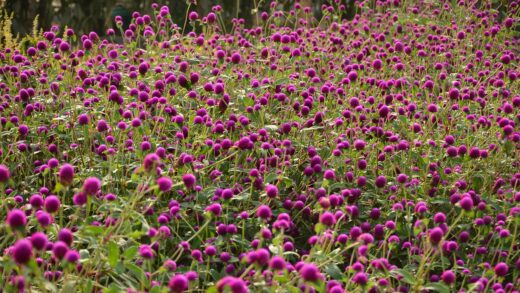The single most influential factor determining the appearance and vigor of a coleus plant is its exposure to light. Light drives photosynthesis, the process that fuels all plant growth, but it also has a profound and direct impact on the development and intensity of the pigments in the leaves. The common perception of coleus as a plant exclusively for shade is outdated; while many traditional varieties do thrive in lower light, decades of selective breeding have produced a vast spectrum of cultivars with diverse light needs. Understanding the specific light requirements of a chosen variety is paramount to unlocking its full, brilliant color potential and ensuring its overall health. The right balance of light will produce a compact, bushy plant with rich, vibrant foliage, while improper lighting can result in faded colors, leggy growth, or even scorched leaves.
Historically, coleus were plants of the forest understory, adapted to thrive in the dappled light filtering through a tree canopy. This is why many older and heirloom varieties perform best in partial to full shade. In these conditions, their leaves often grow larger and the colors, particularly deep reds, burgundies, and rich greens, are expressed most intensely. When exposed to too much direct sun, the delicate foliage of these shade-loving types can easily scorch, leading to brown, crispy patches and a washed-out, bleached appearance as the pigments break down under the intense solar radiation.
In stark contrast to their shade-dwelling ancestors, a significant number of modern coleus hybrids have been specifically developed to tolerate, and in many cases require, full sun exposure to achieve their most dramatic coloration. These “sun coleus” varieties often feature vibrant shades of lime green, orange, bright red, and sunny yellow. When planted in the shade, these cultivars may still grow, but their colors will be muted and less impressive, often reverting to a dull greenish or brownish tone. For these sun-lovers, several hours of direct sunlight per day are necessary to stimulate the production of the pigments that create their dazzling displays.
The transition between light conditions must always be managed carefully. A coleus that was grown in the shady conditions of a greenhouse or has been kept indoors will be shocked if moved directly into full sun. The leaves are not acclimated to the high intensity of ultraviolet radiation and will quickly burn. The plant must be “hardened off” by gradually exposing it to increasing amounts of direct sun over a period of one to two weeks. This allows the plant to adjust physiologically, thickening its cuticles and altering its pigmentation to protect itself from the stronger light.
The language used on plant tags can provide crucial clues to a cultivar’s light preference. Terms like “full sun” typically mean 6 or more hours of direct sun per day. “Partial sun” or “partial shade” usually implies 4 to 6 hours of sun, ideally the less intense morning sun. “Full shade” does not mean no light at all, but rather less than 4 hours of direct sun, or bright, indirect light for most of the day, such as on the north side of a building or under dense trees. Matching the plant to the light conditions of your garden is the first and most important step to success.
More articles on this topic
Sun versus shade cultivars
The distinction between sun and shade coleus cultivars is a critical one for gardeners to understand. Shade-tolerant varieties are genetically predisposed to perform best in lower light levels. Their cellular structure and pigmentation are optimized for environments with bright, indirect light or only a few hours of gentle morning sun. Ideal locations for these types include north-facing gardens, beneath the canopy of large trees, or on covered porches. Cultivars with very dark foliage, such as deep purples and near-blacks, often hold their color best with protection from intense sun, which can cause them to fade to a muddy brown.
Sun-tolerant coleus varieties represent a significant breakthrough in plant breeding. These plants have been selected for their ability to withstand the heat and light intensity of full sun without scorching or fading. They are an excellent choice for adding vibrant, tropical color to sunny borders, exposed patios, and hot, bright areas of the landscape where traditional coleus would fail. Popular sun-loving series like ‘SunPatiens’ or many of the ‘ColorBlaze’ and ‘Sun-Coleus’ lines need this high light intensity to photosynthesize efficiently and produce the brilliant colors for which they are prized.
It is important to note that even sun-tolerant coleus appreciate consistent moisture. A location in full sun is also a location that dries out quickly. While these plants can handle the light, they cannot handle drought. Providing them with rich, moisture-retentive soil and regular watering is essential to keep them from wilting and becoming stressed in the heat of the summer sun. A layer of mulch around the base of the plant can be particularly beneficial in sunny spots to help conserve soil moisture and keep the root zone cool.
For gardeners with mixed-light conditions, many coleus varieties fall into a versatile middle ground, thriving in partial sun or partial shade. These are often the most adaptable types, performing well with about four to six hours of sunlight. An east-facing location, which receives direct sun in the cool of the morning and is shaded during the hottest part of the afternoon, is often the perfect environment for a wide range of coleus cultivars. This provides enough light for good coloration without the stress and risk of scorch from the harsh afternoon sun.
More articles on this topic
Interpreting leaf signals
The leaves of a coleus plant are excellent indicators of whether its light conditions are optimal. Paying close attention to the color and condition of the foliage provides direct feedback, allowing the gardener to make necessary adjustments. If the vibrant colors of a cultivar start to look dull, faded, or washed-out, it is a strong sign that the plant is receiving too much direct sunlight. The intense radiation is essentially bleaching the pigments. Moving the plant to a location with more protection from the afternoon sun will usually restore the rich coloration within a couple of weeks.
Conversely, if a coleus that is supposed to be brightly colored appears predominantly green or its variegation is weak and indistinct, it is almost certainly not receiving enough light. In low-light conditions, the plant will prioritize survival by producing more chlorophyll (the green pigment essential for photosynthesis) at the expense of the more ornamental red, yellow, or pink pigments. Moving the plant to a brighter location with more indirect light or a few hours of direct morning sun will stimulate the production of these other pigments, bringing out the plant’s true colors.
Physical damage to the leaves is another clear signal of improper light exposure. Crispy brown edges, brown or tan patches in the middle of the leaves, or a generally scorched appearance are classic symptoms of sunburn. This occurs when a plant is exposed to more direct sun than it can handle, or when it is moved into a brighter location too quickly without proper acclimatization. While the damaged leaves will not recover, moving the plant to a more suitable, shadier spot will protect the new growth from suffering the same fate.
Leggy growth, characterized by long, weak stems with large gaps between the leaves, is a tell-tale sign of insufficient light. The plant is literally stretching itself out in an attempt to reach for a better light source. This is a very common problem for coleus grown indoors over the winter. The solution is to move the plant to the brightest possible location and to prune or pinch it back regularly. This will encourage more compact, bushy growth and, when combined with adequate light, will result in a much healthier and more attractive plant.
Adjusting light for optimal color
Manipulating the light exposure a coleus receives can be a fascinating way to influence its coloration. The same plant can exhibit a surprisingly different range of colors depending on where it is placed. A gardener can experiment by moving a potted coleus to different spots in the yard to find the precise location that produces the most desirable effect. A cultivar with pink and green variegation might show more intense pink in a brighter spot, but the green might become a richer, deeper shade in a slightly shadier location. This adaptability is part of what makes coleus so versatile in garden design.
For cultivars that are known to develop their best color in the sun, it’s important to provide enough of it. If a sun coleus is planted in a spot that has become shadier over the years due to a growing tree, its performance may decline. In this case, either pruning the tree to allow more light to penetrate or moving the coleus to a sunnier bed is necessary to restore its former glory. The intensity of color in these varieties is a direct response to high light levels, and without that stimulus, they simply cannot produce their signature vibrant hues.
For many intricately patterned varieties, a location with dappled light or morning sun and afternoon shade often provides the best of all worlds. The bright but indirect light is usually sufficient to bring out the full range of colors in the variegation without being so intense that it causes the more delicate pigments to fade. The protection from the hot afternoon sun reduces water stress and prevents scorching, keeping the foliage looking fresh and crisp throughout the season. This type of lighting highlights the subtle complexities of the leaf patterns beautifully.
When growing coleus indoors, replicating ideal light conditions is the main goal. This often means placing them in the sunniest window available, which is typically south-facing. However, even this may not be enough, especially during the short, gray days of winter. This is where supplemental artificial lighting becomes invaluable. Using full-spectrum LED or fluorescent grow lights, positioned several inches above the plants and run for 12-16 hours a day, can effectively mimic a bright summer day. This will not only keep the plants healthy but will also maintain their brilliant foliage color all year round.


















